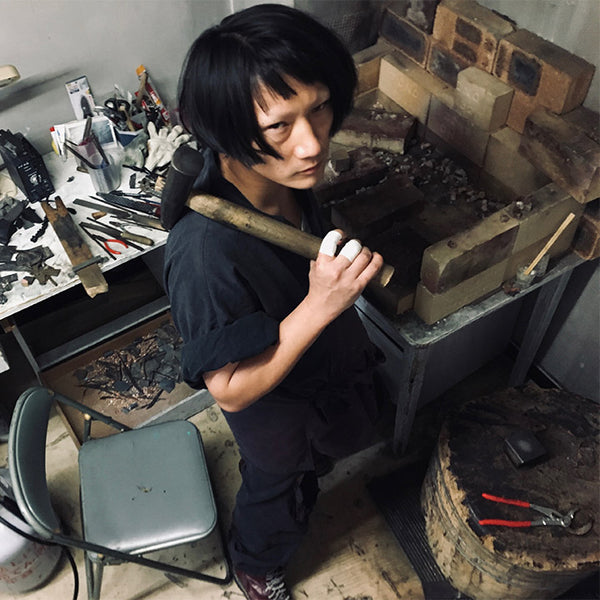SOLO EXHIBITIONS
- 2025
- PRESSURE / Whitestone Ginza New Gallery
- 2024
- ALIVE / Shiga Kogen Roman Art Museum, Nagano
IT WAS / Whitestone Gallery Karuizawa - 2023
- SOLID / Daikanyama Tsutaya Bookstore
- 2022
- EXPLOSION / Whitestone Ginza New Gallery
- 2021
- CORE / Whitestone Gallery Taipei
- 2020
- MASS / Whitestone Ginza New Gallery
ACCUMULATION / Whitestone Gallery Taipei
VORTEX / Whitestone Gallery KARUIZAWA - 2017
- Antagonism and Transcendence:Whitestone Gallery KARUIZAWA
GROUP EXHIBITION
- 2025
- Ambient, Environment, Circumstances -The Topography of Contemporary Art- / Simose Art Museum
- 2024
- Invisible Dimension / Whitestone Gallery Beijing
- 2023
- CULTURAL CITY OF EAST ASIA: SCULPTURE INVITATIONAL EXHIBITION OF CHINA, JAPAN AND KOREA / Qingdao Sculpture Art Museum
WE LOVE KOREA / Whitestone Gallery Seoul
WE LOVE CHINA / Whitestone Gallery Beijing
WE LOVE SINGAPORE / Whitestone Gallery Singapore
Synergy / YOD Gallery Tokyo - 2019
- Neo-Materialism / Whitestone Ginza New Gallery
- 2018
- HEBIME MADARAMANJI : Archetype / Whitestone Gallery KARUIZAWA
- 2017
- INTERMIXTURE / Whitestone Gallery Hong Kong Hollywood Road
ART FAIR
- 2025
- ART SG / Whitestone Gallery
ZONA MACO / YOD Gallery - 2024
- Art Osaka / YOD Gallery
- 2023
- ART021 SHANGHAI / Whitestone Gallery
JINGART / Whitestone Gallery - 2022
- Art Miami / YOD Gallery
ART021 Shanghai / Whitestone Gallery
VOLTA BASEL / YOD Gallery
Art Fair Tokyo / YOD Gallery - 2021
- Art Miami / YOD Gallery
ART TAIPEI / Whitestone Gallery
Art Fair Tokyo 2021 / YOD Gallery - 2020
- art TNZ / YOD Gallery
- 2019
- KUNST RAI 2019 / YOD Gallery
- 2018
- VOLTA 14 / YOD Gallery
- 2017
- ART FAIR ASIA FUKUOKA 2017 / Whitestone Gallery KARUIZAWA
ART NAGOYA 2017 / Whitestone Gallery KARUIZAWA
COLLECTIONS
Koumi-machi Kougen Museum of Art, Nagano Prefecture, Japan
Shiga Kogen Roman Museum, Nagano Prefecture, Japan





















































